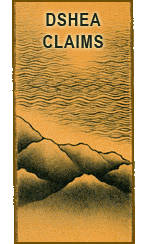DSHEA Tutorial: Claim Substantiation

The FDA describes their substantiation requirements as:
tests, analyses, research, studies, or other evidence based on the expertise of professionals in the relevant area, that has been conducted and evaluated in an objective manner by persons qualified to do so, using procedures generally accepted in the profession to yield accurate and reliable results. [Source]
That’s really not very good news as most of our formulas have not been tested by these standards, though of course there is more than ample testing done in China, Korea, Japan, etc. However English speaking practitioners may not have access to such information to be used as substantiation.
Fortunately for us, the FDA adds:
Although there is no pre-established formula as to how many or what type of studies are needed to substantiate a claim, we, like the FTC, will consider what the accepted norms are in the relevant research fields and consult experts from various disciplines. If there is an existing standard for substantiation developed by a government agency or other authoritative body, we may accord some deference to that standard.
Whether they pick some MD who can’t get behind TCM methods, versus someone who actually knows and works with traditional Chinese herbs is unknown. Keep your fingers crossed on that one.
While the FDA’s substantiation guidelines do include allowances for research that is done in a foreign language, we individual English speaking practitioners still don’t often get to the point where we can use that information, at least not yet. Of course we have to be critical of the research, look at its design, outcome measurements, inclusion and exclusion criteria, and conflicts of interest before taking ANY research too seriously, regardless of which hemisphere it comes from.
However the FDA does make some room for traditional texts as we often find in TCM. Here’s what they have to say about this as an additional form of substantiation:
evidence includes descriptions of experiences of individuals using a dietary supplement product or ingredient. It might also include descriptions of the use of the product or ingredient by others, for example, by other cultures in the past or present.
Keep in mind that this isn’t going to cut it entirely, and the FDA guidelines are very clear on this fact, however seeing how it is all that many of us have to work with, we’ll have to stretch that as best we can.
Some have stretched this guideline well into a gray zone where traditional indications are described while avoiding coming right out and making an explicit claim that an herbal supplement is for all these indications.
Basically, it works like this. If you can quote “traditional uses” for a Chinese herbal formula, you’re kind of stating a use of the product by other cultures of the past such as the following:
Shen Ling Bai Zhu San is used traditionally for diarrhea due to Spleen qi deficiency. Because it strengthens the Spleen qi and dries damp in the intestines, it has also been prescribed for reduced appetite, weakness of the extremities, weight loss, distention and a stifling sensation in the chest and epigastrium, pallid and wan complexion, a pale tongue with a white coating, and a moderate or deficient pulse. There may also be vomiting. (Bensky, Barolet 1990)
So now you have an historically correct list of diseases that, while not explicitly marketing your formula to address these things, are all the same listing items that this book describes as indications for Shen Ling Bai Zhu San.
Does that mean that the FDA won’t have a problem with your listing all these diseases as “traditional indications”? Probably not, in fact on the next page, you’ll see how the FDA has considered “traditional functions” to be disease claims.
Next: compliance areas of interest to the FDA.
 Last modified: August 2, 2009
Last modified: August 2, 2009  Tags: Claims, DSHEA В· Posted in: Claims
Tags: Claims, DSHEA В· Posted in: Claims
